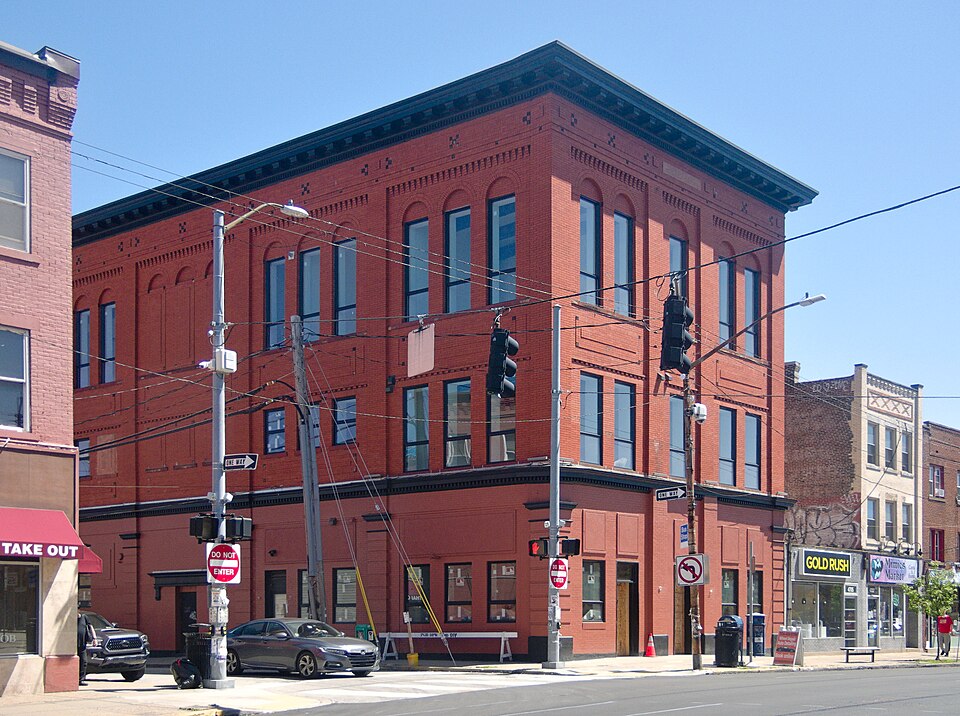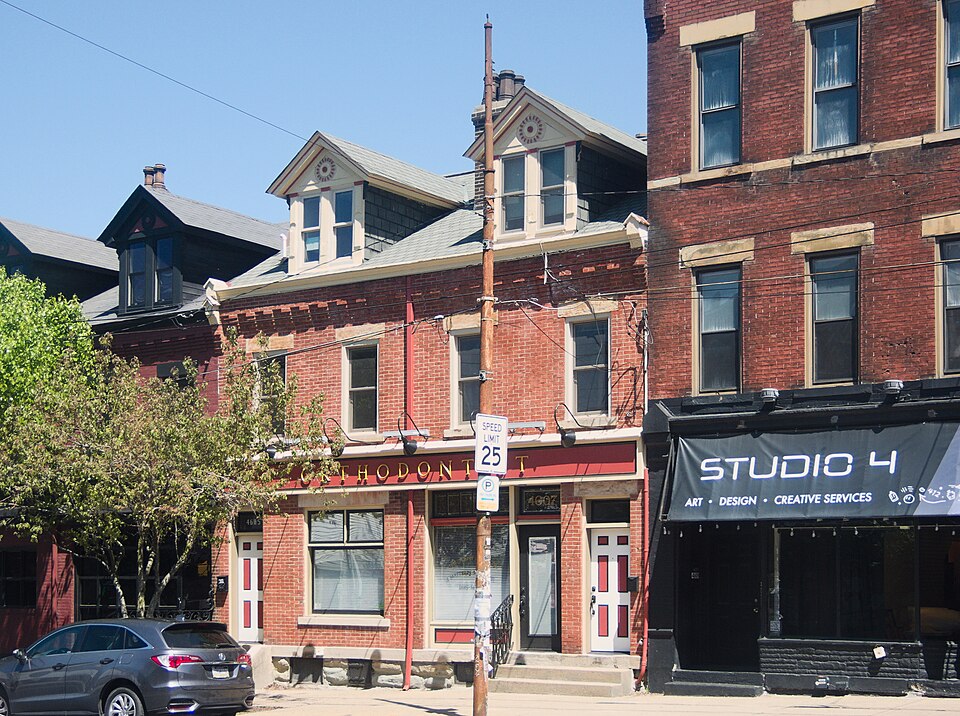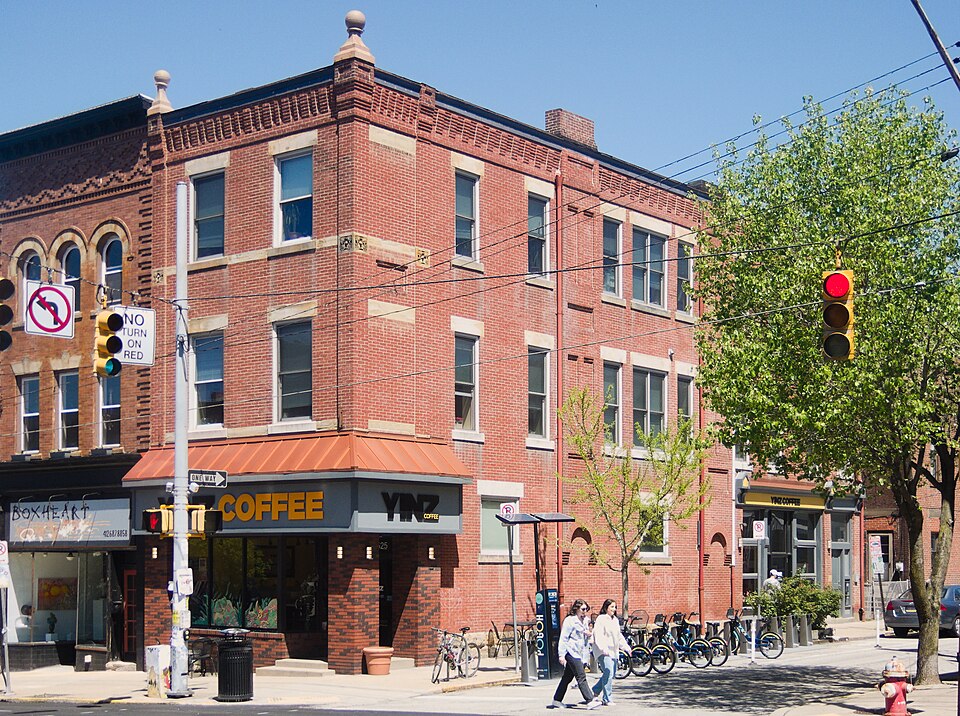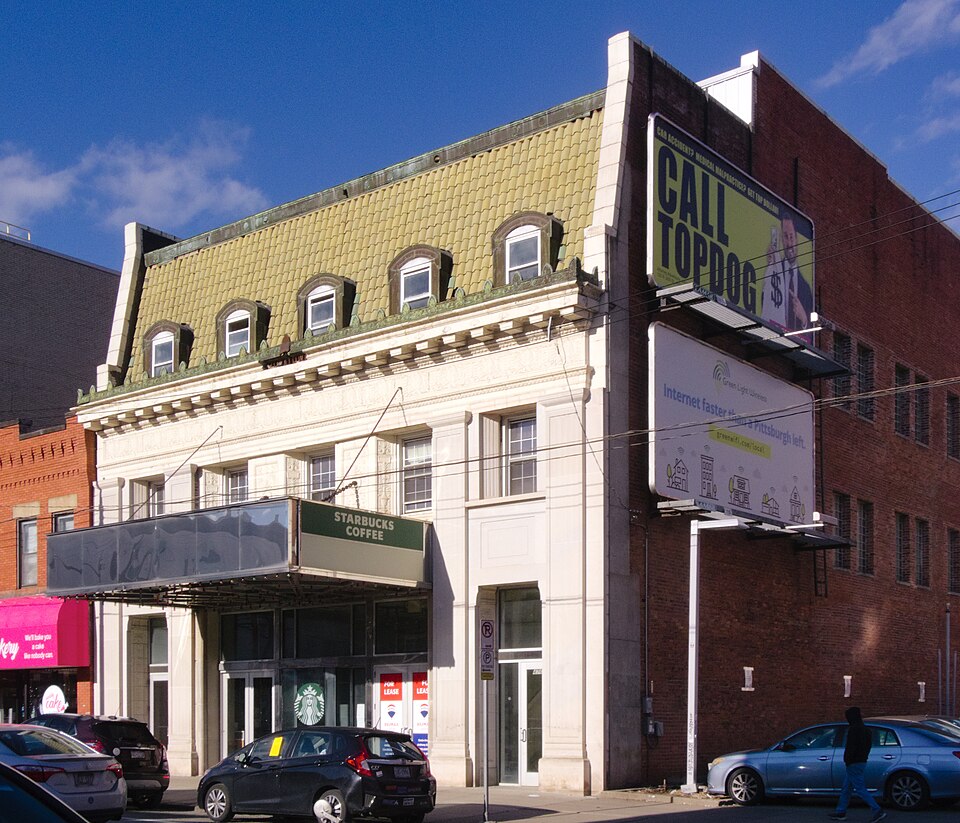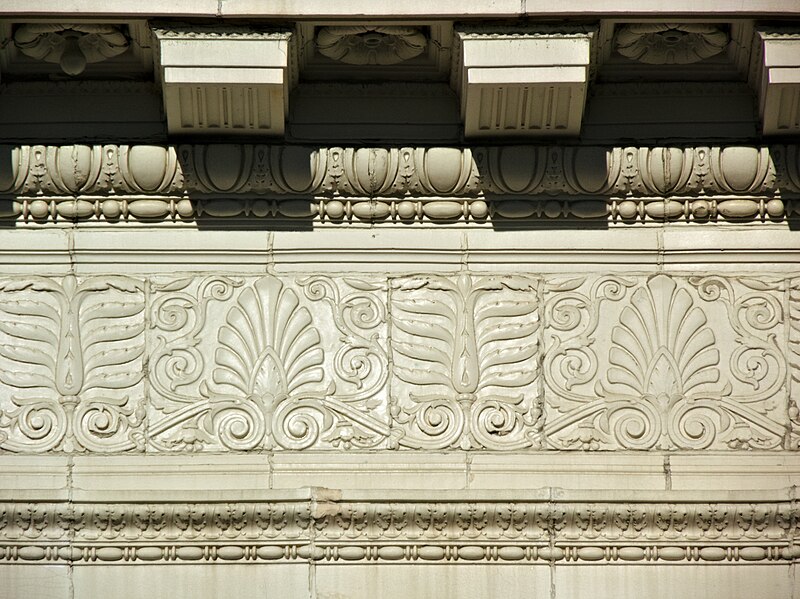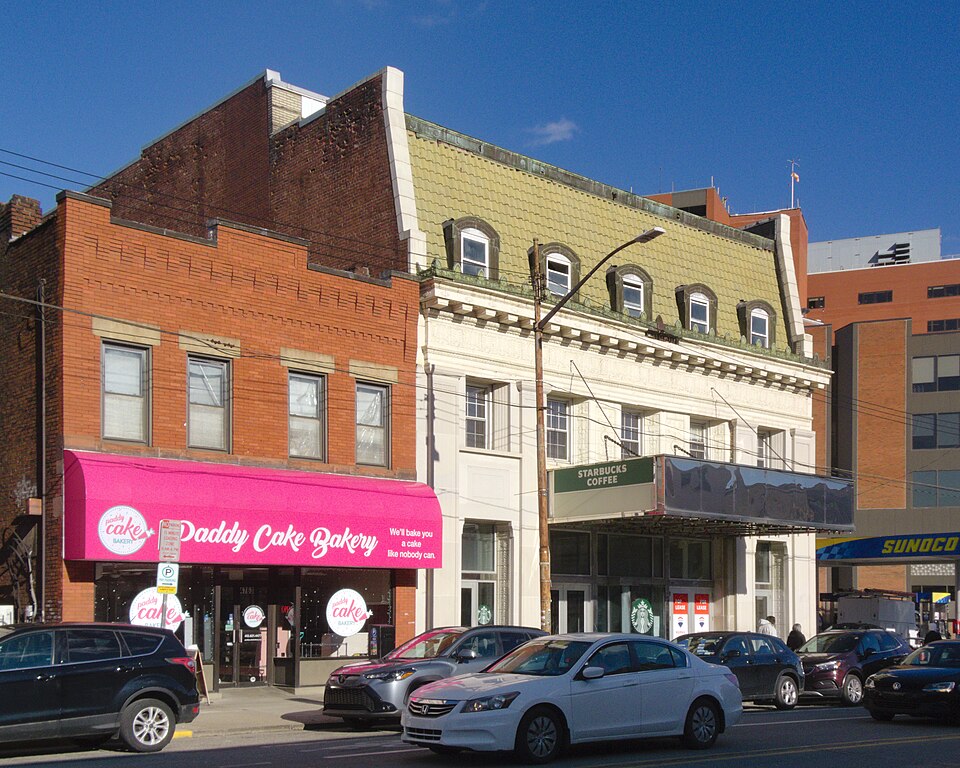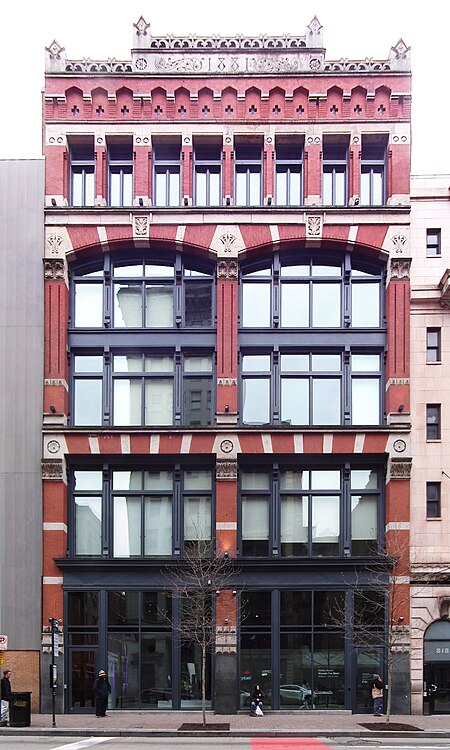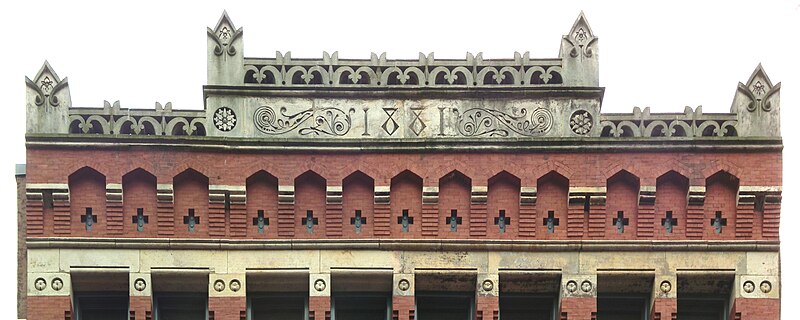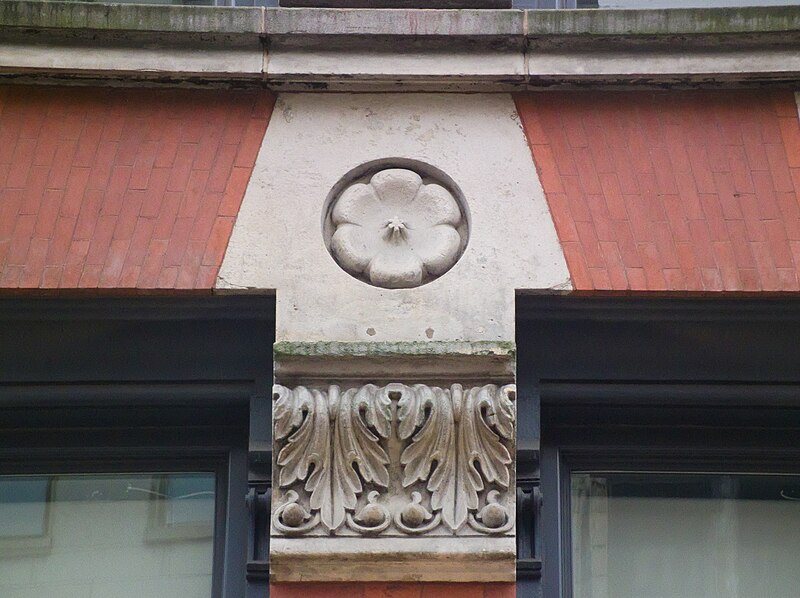
The shopping arcade at Fifth Avenue Place, like almost all indoor shopping arcades and a good many enclosed shopping malls, withered and emptied, so advertising it on the Liberty Avenue entrance no longer made sense. The new entrance is much more restrained, modernist rather than postmodernist. This, in case you don’t remember, is what it used to look like:

Father Pitt will not fault the tasteful modernism of the new design in isolation—in fact he thinks it makes a good picture—but it does not fit the spirit of Reagan-era excess in the building itself. It would have been better to leave the old entrance, with its gold-foil arch and its giant clock, and just remove the signs.
It is a rule, however, that the style of the previous generation is always the most embarrassing, and the style of the generation before it is always to be preferred. It seems to old Pa Pitt that today’s architects and builders are embarrassed by the exuberant postmodernism of the 1980s, and are taking every opportunity to remold it into fussily correct International Style modernism, exactly the same way their ancestors of a century ago were embarrassed by the exuberant Victorianism of the 1880s and were taking every opportunity to remold it into fussily correct classicism.
Comments















